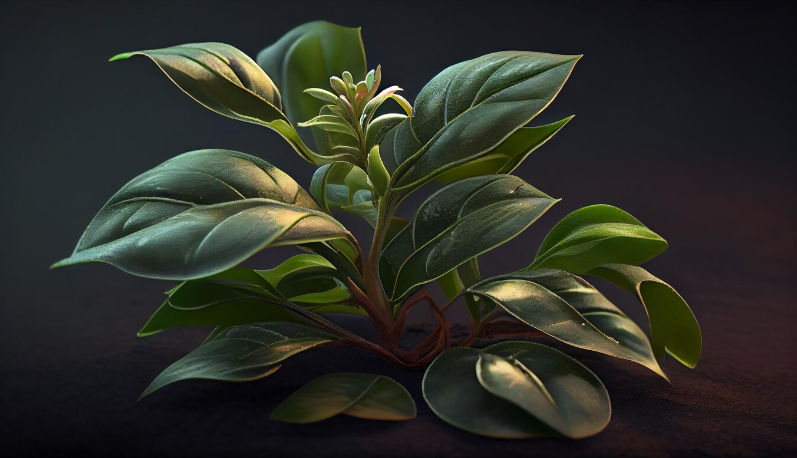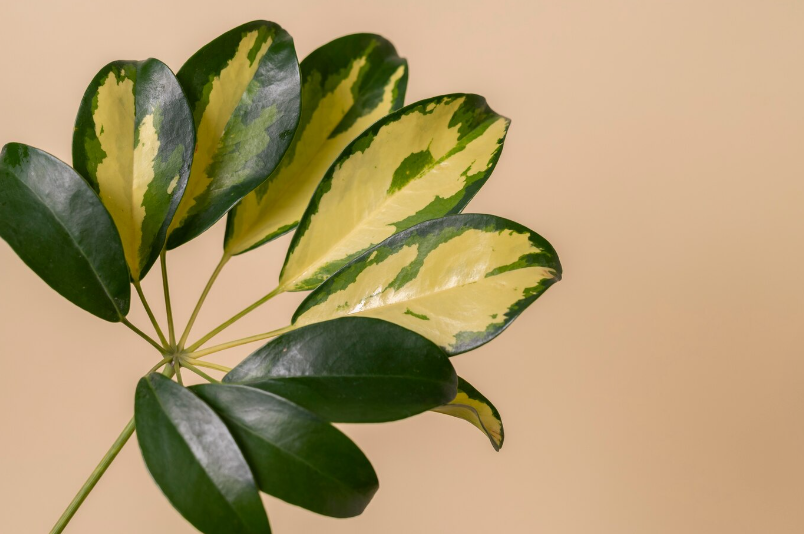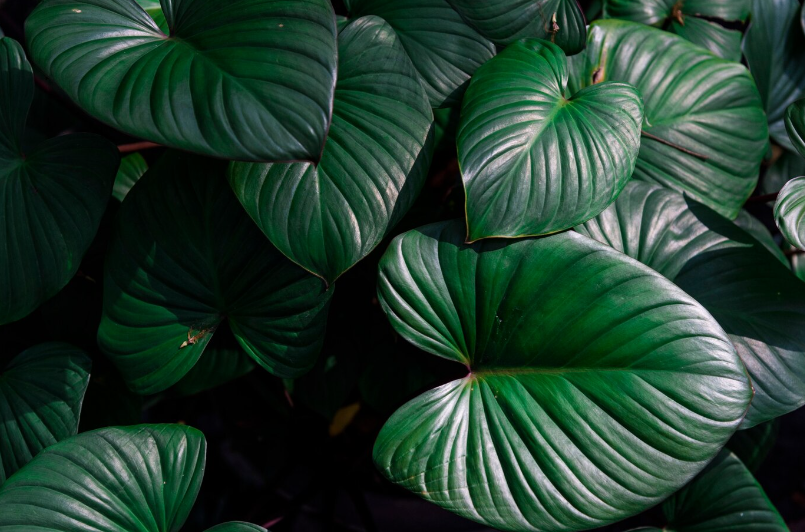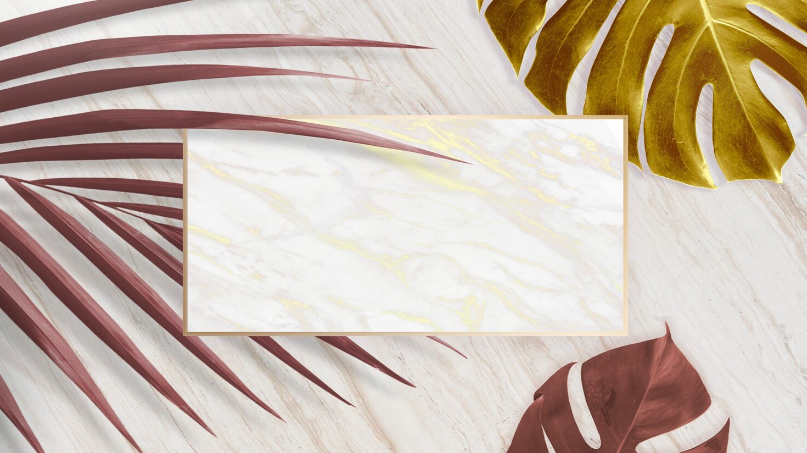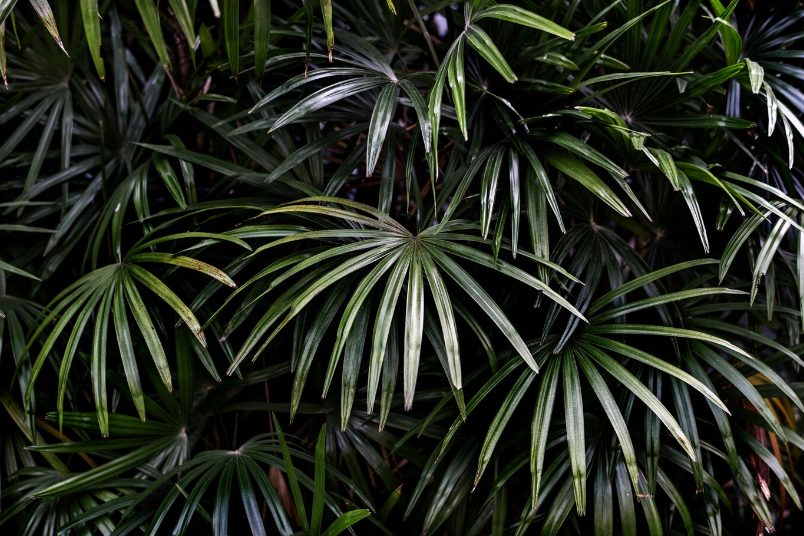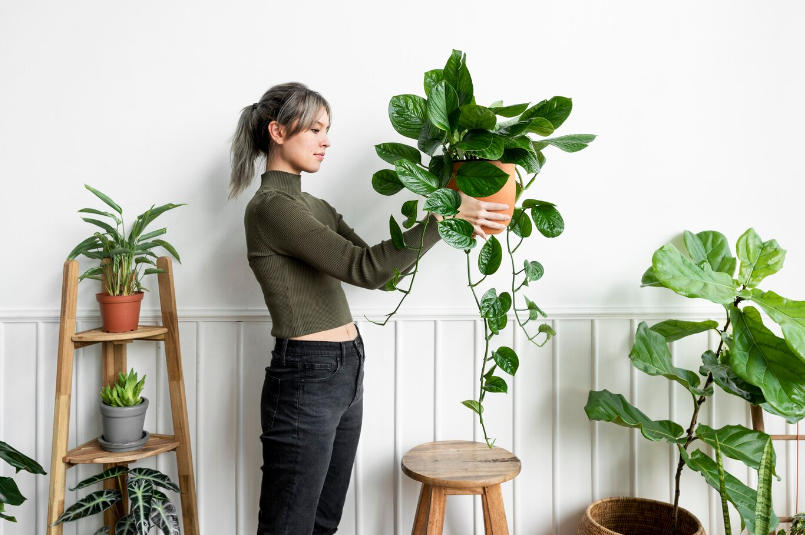Selloum and Cordatum Philodendrons with a History

Discover the beauty and charm of Selloum and Cordatum Philodendrons, unique plants with a rich and fascinating history. These tropical wonders will bring a touch of elegance and serenity to any space, whether it’s your office, living room, or even your bathroom.
Why Choose Selloum and Cordatum Philodendrons?
1. Unparalleled Beauty: With their lush, vibrant green leaves and intricate patterns, Selloum and Cordatum Philodendrons are truly a sight to behold. These plants will instantly elevate the visual appeal of any room.
2. Low Maintenance: If you’re worried about taking care of a high-maintenance plant, worry no more. Selloum and Cordatum Philodendrons are known for their resilience and can thrive even in low-light conditions.
3. Air Purifiers: In addition to their aesthetic appeal, Selloum and Cordatum Philodendrons also have air-purifying properties. They naturally remove toxins from the air, creating a healthier and fresher environment for you and your loved ones.
4. Historically Significant: These plants have a rich history dating back centuries. Selloum and Cordatum Philodendrons have been revered by various cultures for their symbolism and medicinal properties. By owning one of these plants, you become a part of this storied heritage.
Don’t miss your chance to own these remarkable plants. Order your Selloum and Cordatum Philodendrons today and bring a touch of history and natural elegance into your life.
Philodendron Selloum: Identity and Characteristics
Philodendron Selloum, also known as Philodendron bipinnatifidum, is a popular tropical plant that belongs to the Araceae family. This stunning plant is native to the rainforests of South America, particularly Brazil, Paraguay, and Argentina. Its unique appearance and impressive size make it a favorite among plant enthusiasts.
One of the distinguishing characteristics of Philodendron Selloum is its large, lobed leaves. These leaves can grow up to three feet in length, giving the plant a lush and tropical look. The leaves are deeply divided, with multiple lobes that give it a unique, feather-like appearance.
Another remarkable feature of the Philodendron Selloum is its impressive height. This plant can grow up to six feet tall, making it an excellent choice for filling empty spaces in your home or office. Its size and grandeur make it a statement piece that can instantly elevate the look of any space.
Philodendron Selloum is an easy-to-care-for plant, making it perfect for both experienced plant owners and beginners. It thrives in bright, indirect light, but can also tolerate low-light conditions. Keep the soil consistently moist, but not overly saturated, and mist the leaves to provide humidity.
| Common Name: | Philodendron Selloum |
| Scientific Name: | Philodendron bipinnatifidum |
| Family: | Araceae |
| Native to: | South America (Brazil, Paraguay, Argentina) |
| Height: | Up to 6 feet |
| Light Requirements: | Bright, indirect light |
| Watering: | Consistently moist soil, mist leaves for humidity |
Add a touch of elegance and tropical charm to your space with the stunning Philodendron Selloum. With its unique characteristics and easy care requirements, it is the perfect addition to any home or office. Order your own Philodendron Selloum today and experience the beauty of nature in your surroundings!
What is another name for a Philodendron Selloum?
A Philodendron Selloum is also commonly known as a Tree Philodendron or a Philodendron Hope. This name is derived from its unique growth habit, resembling a small tree with its long, sprawling branches and large, glossy leaves. The name “Hope” refers to the plant’s ability to bring a sense of optimism and vitality to any space it occupies.
The Philodendron Selloum is a popular choice among plant enthusiasts and interior decorators alike, thanks to its tropical appeal and low-maintenance nature. Its lush foliage and robust growth make it a standout addition to any indoor or outdoor garden.
When it comes to caring for a Philodendron Selloum, it is important to provide it with bright, indirect light and well-draining soil. It thrives in humid environments and benefits from regular misting or placement near a humidifier. This plant is known for its resilience and ability to tolerate a range of conditions, making it an excellent choice for both beginner and experienced plant owners.
| Common Names | Scientific Name | Characteristics |
|---|---|---|
| Philodendron Selloum | Philodendron bipinnatifidum | – Large, glossy leaves |
| Tree Philodendron | Philodendron bipinnatifidum | – Resembles a small tree |
| Philodendron Hope | Philodendron bipinnatifidum | – Signals optimism and vitality |
Whether you call it a Philodendron Selloum, Tree Philodendron, or Philodendron Hope, this plant is sure to bring a touch of natural beauty and tranquility to any space it inhabits. Embrace its lushness and enjoy the sense of calm it can provide.
What is the difference between Philodendron Selloum and tree philodendron?
Philodendron Selloum and tree philodendron are two popular varieties of the Philodendron genus. While they share some similarities, there are a few key differences that set them apart.
| Feature | Philodendron Selloum | Tree Philodendron |
|---|---|---|
| Leaf Size | Larger, broader leaves | Smaller, more elongated leaves |
| Leaf Shape | Deeply lobed, wavy edges | Entire, lanceolate shape |
| Growth Habit | Shrub-like, bushy growth | Vining, climbing growth |
| Mature Size | Taller and wider | Tends to stay more compact |
| Light Requirements | Can tolerate lower light levels | Prefers bright, indirect light |
| Propagation | Mostly through division | Can be propagated through cuttings |
These differences in leaf size, shape, growth habit, and light requirements make Philodendron Selloum and tree philodendron suitable for different growing conditions and aesthetic preferences. Whether you prefer the bushy, robust appearance of Philodendron Selloum or the vining, compact form of tree philodendron, both varieties can add a touch of tropical beauty to any indoor or outdoor space.
Is Philodendron Selloum a climber?
Philodendron Selloum, also known as a Tree Philodendron, is not a climber. Unlike many other varieties of Philodendron, Selloum has a unique growth habit that sets it apart. Instead of climbing, Selloum grows in a more bush-like and compact manner, with its leaves growing outwards in a layered fashion.
With its large, glossy, and deeply lobed leaves, Philodendron Selloum adds a touch of tropical beauty to any space. It is a popular choice for indoor gardening, as it can thrive in low-light conditions. Its robust and easy-to-care-for nature makes it a great choice for both experienced and novice plant enthusiasts.
While Selloum may not climb like some other Philodendron varieties, it can still benefit from some support. The weight of its large leaves can cause the plant to lean or even topple over. By providing a stake or trellis, you can help support the plant’s growth and create a more visually appealing shape.
In conclusion, if you are looking for a stunning and low-maintenance plant that is not a climber, Philodendron Selloum is an excellent choice. Its unique growth habit and beautiful foliage make it a standout addition to any indoor or outdoor space.
Exploring Philodendron Cordatum
Philodendron cordatum, also known as the Heartleaf Philodendron, is a popular houseplant that belongs to the Araceae family. With its heart-shaped leaves and vining growth habit, it makes for an attractive addition to any indoor space.
This plant is native to the tropical rainforests of Brazil, where it can be found growing on trees or rocks. The name “cordatum” comes from the Latin word “cordatus,” which means heart-shaped, a fitting description for the plant’s unique leaf shape.
The Heartleaf Philodendron is easy to care for, making it an ideal choice for beginner plant enthusiasts. It thrives in bright, indirect light but can tolerate low light conditions as well. The plant prefers slightly moist soil and should be watered when the top inch of soil feels dry.
One of the reasons why Philodendron cordatum is so popular is its ability to improve indoor air quality. Like other plants in the Philodendron genus, it is known for its air-purifying properties, helping to remove toxins such as formaldehyde from the air.
In addition to its aesthetic and air-purifying benefits, the Heartleaf Philodendron also has a rich history. It has been cultivated for centuries and was highly valued by the Mayans and Aztecs for its medicinal properties. Today, it is still used in traditional medicine to treat various ailments.
If you’re looking to add a touch of greenery to your home or office, Philodendron cordatum is a versatile and beautiful choice. Whether you’re an experienced plant parent or just starting out, this plant is sure to thrive with minimal care and bring a sense of tranquility to your space.
What is another name for a Philodendron Cordatum?
Another name for a Philodendron Cordatum is the Heartleaf Philodendron. This name comes from the shape of its leaves, which resemble the shape of a heart. The Heartleaf Philodendron is a popular houseplant known for its attractiveness and low-maintenance care requirements.
Is Philodendron Cordatum a climber?
Yes, Philodendron Cordatum is a climbing plant! Its long, trailing vines are designed to climb up trees in its natural environment. This unique characteristic makes it a popular choice for those looking to add a touch of jungle-like greenery to their homes or offices.
The Philodendron Cordatum is part of the Araceae family and is native to the tropical regions of Central and South America. In its natural habitat, it uses its aerial roots to attach itself to trees and other vertical surfaces, allowing it to climb and explore its surroundings.
When grown indoors, the Philodendron Cordatum can be trained to climb along a trellis or a moss pole, creating an eye-catching display and adding height to any space. Its heart-shaped leaves, which can range from dark green to variegated patterns, add a touch of elegance to any room.
It’s important to note that, while the Philodendron Cordatum is a climber, it can also be grown as a trailing plant if you prefer a more cascading look. Its flexible vines can be allowed to hang or placed in a hanging basket, creating a beautiful and lush display.
Benefits of having a Philodendron Cordatum:
- Improves indoor air quality by removing toxins and releasing oxygen.
- Easy to grow and care for, making it a perfect choice for beginners.
- Adds a tropical touch and a sense of lushness to any space.
- Can be grown in various lighting conditions, from bright indirect light to low light.
- Its climbing or trailing vines allow for versatile placement options.
In conclusion, the Philodendron Cordatum is not only a beautiful and versatile plant, but it is also a natural climber, making it an excellent choice for plant enthusiasts who want to bring a touch of the jungle indoors.
Is Philodendron Cordatum toxic?
Many people wonder if the Philodendron Cordatum plant is toxic, especially when considering it for households with children or pets.
It is important to note that the Philodendron Cordatum plant, like most plants in the Philodendron genus, contains calcium oxalate crystals. These crystals are toxic to humans and animals when ingested.
When chewed or swallowed, the crystals can cause irritation and swelling of the mouth, tongue, and throat. Symptoms may include drooling, difficulty swallowing, and nausea. In severe cases, it can lead to choking and difficulty breathing.
It is crucial to keep Philodendron Cordatum plants out of reach of children and pets to prevent any accidental ingestion. If you suspect that someone has ingested any part of the plant or is experiencing symptoms, it is vital to seek immediate medical attention.
While the Philodendron Cordatum plant is an excellent addition to interior spaces due to its air-purifying qualities and beautiful heart-shaped leaves, caution must be exercised to ensure the safety of everyone in the household.
Remember:
Philodendron Cordatum plants are toxic when ingested, and it is essential to keep them away from children and pets. If accidental ingestion occurs or symptoms arise, seek medical help immediately.
Care, Cultivation, and Comparison
When it comes to caring for Selloum and Cordatum Philodendrons, there are a few key factors to keep in mind. Both of these plants thrive in indoor environments with bright, indirect light. However, Selloum Philodendrons are more tolerant of lower light conditions compared to Cordatum Philodendrons, which prefer medium to bright light.
Watering is another important aspect of their care. Both plants require regular watering, but it’s crucial not to overwater them. Allow the top inch of soil to dry out between waterings to prevent root rot. It’s also recommended to use well-draining soil for optimum growth.
When it comes to fertilizing, both Selloum and Cordatum Philodendrons benefit from regular feeding during the growing season. Use a balanced liquid fertilizer every two weeks to promote healthy foliage and growth. Be sure to follow the instructions on the fertilizer packaging for proper dosage.
As for propagation, both plants can be easily propagated through stem cuttings. Simply take a cutting with at least two leaf nodes, remove the lower leaves, and place it in a jar of water. After a few weeks, roots will start to form, and you can transfer the cutting into a pot with soil.
In terms of appearance, Selloum Philodendrons have large, deeply lobed leaves that give them a tropical and exotic look. On the other hand, Cordatum Philodendrons have smaller, heart-shaped leaves that are more compact.
Overall, both Selloum and Cordatum Philodendrons are beautiful and easy-to-care-for houseplants. Whether you choose Selloum for its tropical appeal or Cordatum for its compact size, these philodendrons are sure to add a touch of greenery and elegance to any indoor space.
Does Selloum need sunlight?
Selloum philodendrons are tropical plants that thrive in bright, indirect sunlight. While they can tolerate lower light conditions, they will not grow and develop as well as they would in a well-lit area. In a room with bright, filtered light, like a north or east-facing window, Selloum philodendrons can grow into large, lush plants with their iconic split leaves.
It’s important to avoid placing Selloum philodendrons in direct sunlight, as this can scorch their leaves and cause damage. They prefer bright, indirect light that mimics the conditions of their natural habitat in the understory of tropical forests.
When it comes to sunlight, finding the right balance is key. Too much direct sunlight can be harmful, while too little light can cause slow growth and leggy stems. Aim to provide your Selloum philodendrons with bright, indirect light for several hours a day, and they will reward you with their beautiful foliage and healthy growth.
If you have a Selloum philodendron and are unsure about the lighting conditions in your home, observe the plant’s behavior. If the leaves start to turn yellow or develop brown spots, it may be receiving too much direct sunlight. On the other hand, if the leaves are pale and the stems are elongated, it may not be getting enough light.
Providing the right amount of sunlight, along with proper watering and regular fertilization, will ensure that your Selloum philodendron thrives and brings beauty to any space in your home.
| Lighting Conditions | Plant Behavior |
|---|---|
| Bright, indirect light | Lush growth and healthy foliage |
| Direct sunlight | Scorched leaves and damage |
| Low light | Slow growth and leggy stems |
Can Selloum survive low light?
The Selloum Philodendron, also known as the Philodendron bipinnatifidum, is a hardy plant that can tolerate a wide range of light conditions. While it thrives in bright, indirect light, it can also survive in low light conditions.
In low light conditions, the Selloum Philodendron may grow slowly and have smaller leaves compared to when it is placed in brighter light. However, it is essential to note that low light does not mean no light. All plants, including the Selloum Philodendron, require some light to survive.
If you are planning to keep your Selloum Philodendron in a low light area, there are a few things you can do to ensure its survival. Firstly, place the plant near a north-facing window or an area with indirect light. This will provide the plant with a sufficient amount of light without exposing it to direct sunlight, which can burn the leaves.
Secondly, make sure to rotate the plant regularly to ensure that all sides receive some light. This will prevent the leaves from leaning towards the light source and promote a balanced growth.
Lastly, keep in mind that even though the Selloum Philodendron can survive in low light conditions, it will still benefit from occasional exposure to brighter light. Consider moving the plant to a brighter spot for a few hours every few weeks to give it an extra boost of energy.
Overall, while the Selloum Philodendron can survive low light conditions, it is always best to provide it with as much light as possible to ensure optimal growth and health.
Is Selloum a Monstera?
When it comes to indoor plants, Selloum and Monstera are two popular choices. While they may share some similarities, they are actually two different plants. Selloum, also known as Philodendron bipinnatifidum, belongs to the family of Araceae and is native to South America.
On the other hand, Monstera, scientifically known as Monstera deliciosa, is a tropical plant native to the rainforests of Central America. It is known for its large, fenestrated leaves that give it a unique and attractive appearance.
Although both Selloum and Monstera are part of the Araceae family, they have distinct characteristics that set them apart. Selloum has deeply lobed, almost dissected leaves, while Monstera has large, heart-shaped leaves with unique perforations.
Another key difference between Selloum and Monstera is their growth habit. Selloum is known for its bushy and compact growth, while Monstera tends to climb and can grow much taller with proper support.
Both Selloum and Monstera are popular choices for indoor gardening enthusiasts. They are relatively low-maintenance plants that can thrive in a variety of light conditions, making them suitable for different indoor environments.
So, to answer the question, no, Selloum is not a Monstera. They may belong to the same plant family, but they have distinct characteristics that make them unique and separate plants.
| Selloum | Monstera |
|---|---|
| Scientific Name: Philodendron bipinnatifidum | Scientific Name: Monstera deliciosa |
| Origin: South America | Origin: Central America |
| Leaf Shape: Deeply lobed, almost dissected | Leaf Shape: Large, heart-shaped with perforations |
| Growth Habit: Bushy and compact | Growth Habit: Climbing, can grow tall with support |
Question-answer:
What is the history of Selloum and Cordatum Philodendrons?
Selloum and Cordatum Philodendrons are tropical plants native to Brazil. They have a long history of being cultivated and enjoyed for their lush, green foliage. These plants have been popular houseplants for many years and are known for their ability to thrive in a variety of indoor environments.
Can Selloum and Cordatum Philodendrons be grown outdoors?
Selloum and Cordatum Philodendrons are primarily indoor plants, but they can be grown outdoors in tropical and subtropical regions. They prefer warm and humid conditions, so they may not thrive in cooler or drier climates.
Do Selloum and Cordatum Philodendrons require a lot of care?
Selloum and Cordatum Philodendrons are relatively low-maintenance plants. They require bright, indirect light, regular watering (allowing the soil to dry out slightly between waterings), and occasional fertilization. These plants are generally considered easy to care for and are a popular choice for beginners.
How big do Selloum and Cordatum Philodendrons grow?
Selloum and Cordatum Philodendrons can grow to be quite large, with Selloum Philodendrons reaching heights of 3 to 6 feet and Cordatum Philodendrons reaching heights of 1 to 3 feet. The size of the plant will depend on its age and the growing conditions.
